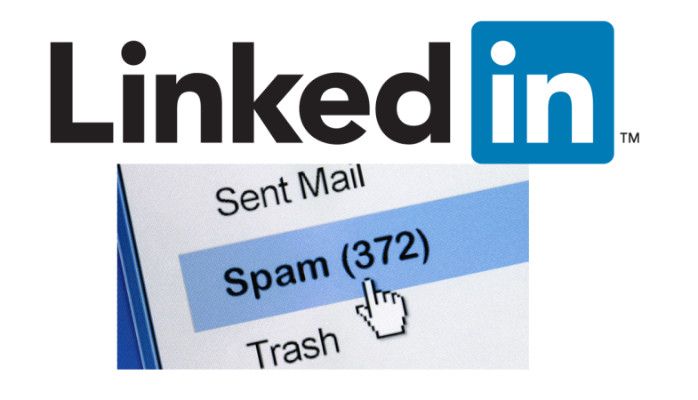If you have a LinkedIn account, chances are you’ve received connection requests or messages that seem spammy or suspicious. Spam and fake accounts are an unfortunate reality on many social media platforms, including LinkedIn. While LinkedIn has security measures in place to detect spam, some still slips through the cracks. Understanding why you may be targeted by spam accounts on LinkedIn can help you identify and avoid them.
LinkedIn’s popularity makes it a target
With over 740 million members, LinkedIn is the largest professional social network. This sheer size and popularity means it’s an attractive platform for spammers trying to reach a large audience. Many legitimate individuals and businesses use LinkedIn to network and market services. Spammers take advantage of this active user base for their own gain.
Common LinkedIn spam tactics include:
- Mass connection requests using fake profiles
- “Phishing” messages attempting to get private information or install malware
- Promotional messages advertising irrelevant products or services
As annoying as these tactics are for users, LinkedIn’s scale gives spammers access to millions of potential targets.
Targeting by profile and industry
Spammers don’t send messages randomly. They often target LinkedIn users strategically based on profile details like industry, job title, connections, etc. For example, someone with a technical background may receive more IT service offers, while a financial executive could see investment pitches.
Some common targeting factors include:
- Industry and experience – IT professionals, consultants, etc. often targeted for tech services
- Job seniority – Executives targeted for corporate sales, leadership coaching, etc.
- Connections and groups – Targeting based on networks and associations
- Skills and interests – Targeting users with valuable skills in demand
- Location – Targeting by city/region for local offers
Understanding these targeting factors can help identify and avoid suspicious messages and connection requests.
Third-party apps and integrations
LinkedIn allows third-party apps and services to integrate with LinkedIn accounts. This can be very useful for productivity and networking. However, some spammers take advantage of this integration to send spammy messages and requests.
Some ways this can happen include:
- Connecting with an app that sends automated spam messages
- Providing profile access to an app that scrapes data for spam targeting
- Apps posting spammy updates without user consent
Being cautious when connecting third-party apps to your LinkedIn account can help avoid some spam risks. Only use reputable apps recommended by LinkedIn or others in your network.
Security challenges for LinkedIn
With over 310 million monthly active users, LinkedIn has the monumental task of combating spam across a massive global platform. Their security and anti-abuse teams utilize advanced technology and policies, but some spam still gets through for various reasons:
- Volume – LinkedIn sees over 3 million posts, messages, and other content daily. Very difficult to monitor everything.
- Automation – Spammers use bots and automated tools to evade detection.
- User reporting – LinkedIn relies on user reporting of spam, which has limitations.
- No content filtering – LinkedIn does not filter or moderate most user-to-user content and messages.
Considering these challenges, LinkedIn’s anti-spam technology does an impressive job, but perfection is impossible. As a user, staying vigilant is important.
How to avoid and deal with LinkedIn spam
While occasional spam is nearly unavoidable on LinkedIn, you’re not powerless against it. Here are some tips to help identify and address spam to keep your LinkedIn experience productive:
- Review privacy settings – Adjust profile visibility and other privacy settings to protect your info.
- Be selective with apps – Don’t connect every third-party app that asks for LinkedIn access.
- Watch for red flags – Bad grammar, random links, and hard sells often signal spam.
- Hover over profiles – See if the profile matches the name, photo, and company.
- Ignore suspicious messages – Don’t reply or click links from unknown contacts.
- Report spam – Use LinkedIn reporting tools to flag spam accounts and content.
- Block accounts – Prevent repeat offenders from contacting you again.
With vigilance and common sense, you can identify and deal with most LinkedIn spam before it becomes a problem. Don’t ignore blatant red flags, and leverage LinkedIn’s tools to report bad actors on the platform.
LinkedIn’s efforts against spam
While LinkedIn spam isn’t going away completely, LinkedIn is making significant investments to improve safety and reduce abuse:
- Reporting tools – Easy ways to report fake profiles, spam, harassment, and other abuse
- Automated protection – AI and machine learning to proactively detect spam and suspicious behavior
- Human review – Teams reviewing challenging cases flagged by users and automated systems
- Partnerships – Working with industry partners, researchers, and others to share threat intelligence
Billions are spent each year by LinkedIn on trust, safety, and anti-abuse initiatives. User reporting also helps train the automated systems. The combination of human oversight and AI is combating advanced spam tactics.
Outlook on LinkedIn spam
Spam prevention is an ongoing battle as spammers continuously evolve new ways to bypass protections. LinkedIn and other networks try to stay one step ahead. With vigilance and tighter platform controls, the hope is to gradually improve the signal-to-noise ratio for users.
Expect LinkedIn spam to persist given the financial incentives and challenges of enforcement across hundreds of millions of accounts. But you can have greater confidence that:
- The most egregious violators will be caught and banned
- AI and human oversight will improve to catch more subtle spam
- Users will have better tools to identify and combat spam
While LinkedIn may never be spam-free, you can have an excellent user experience by applying safe practices, leveraging security features, and supporting LinkedIn’s trust and safety teams via user reporting.


